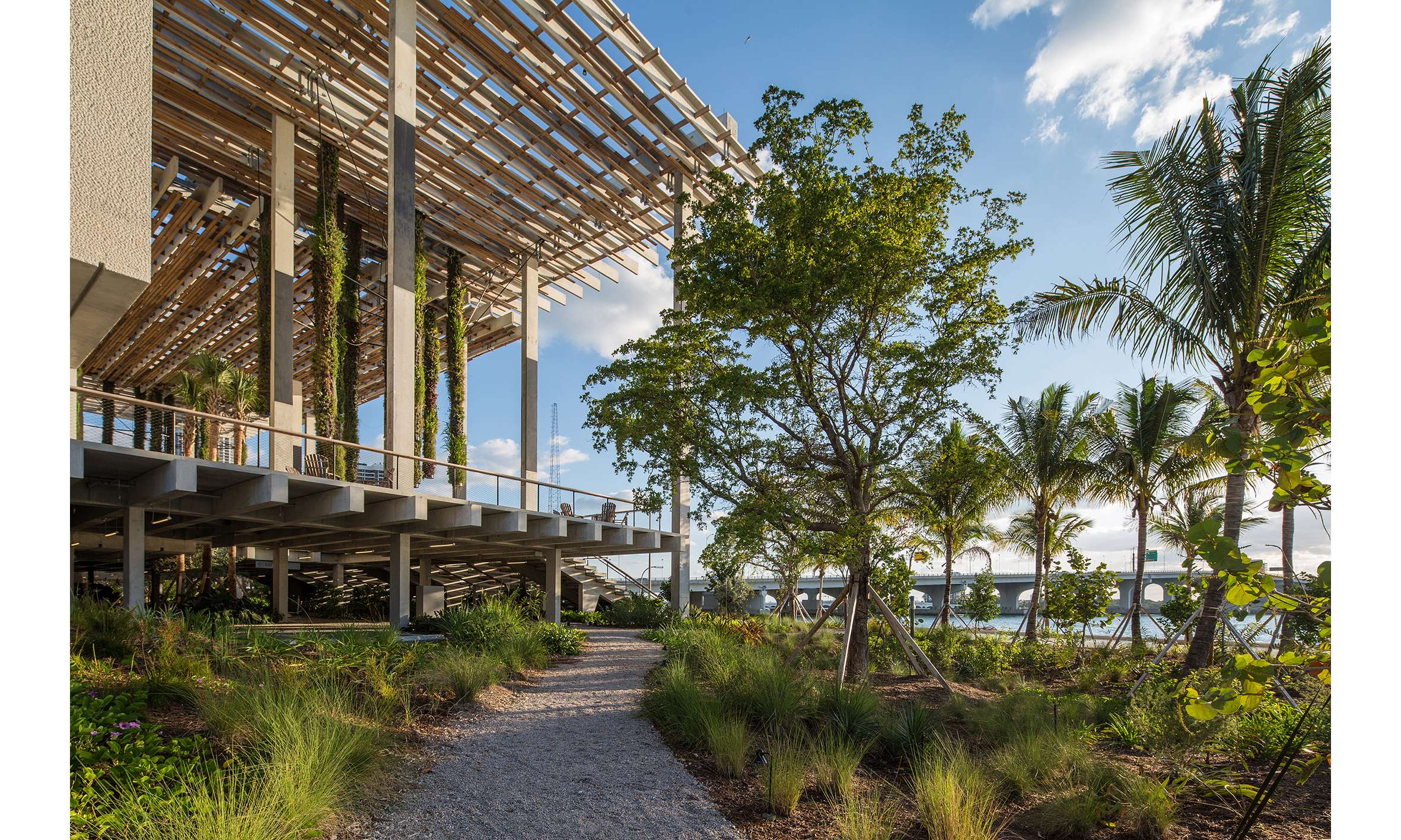
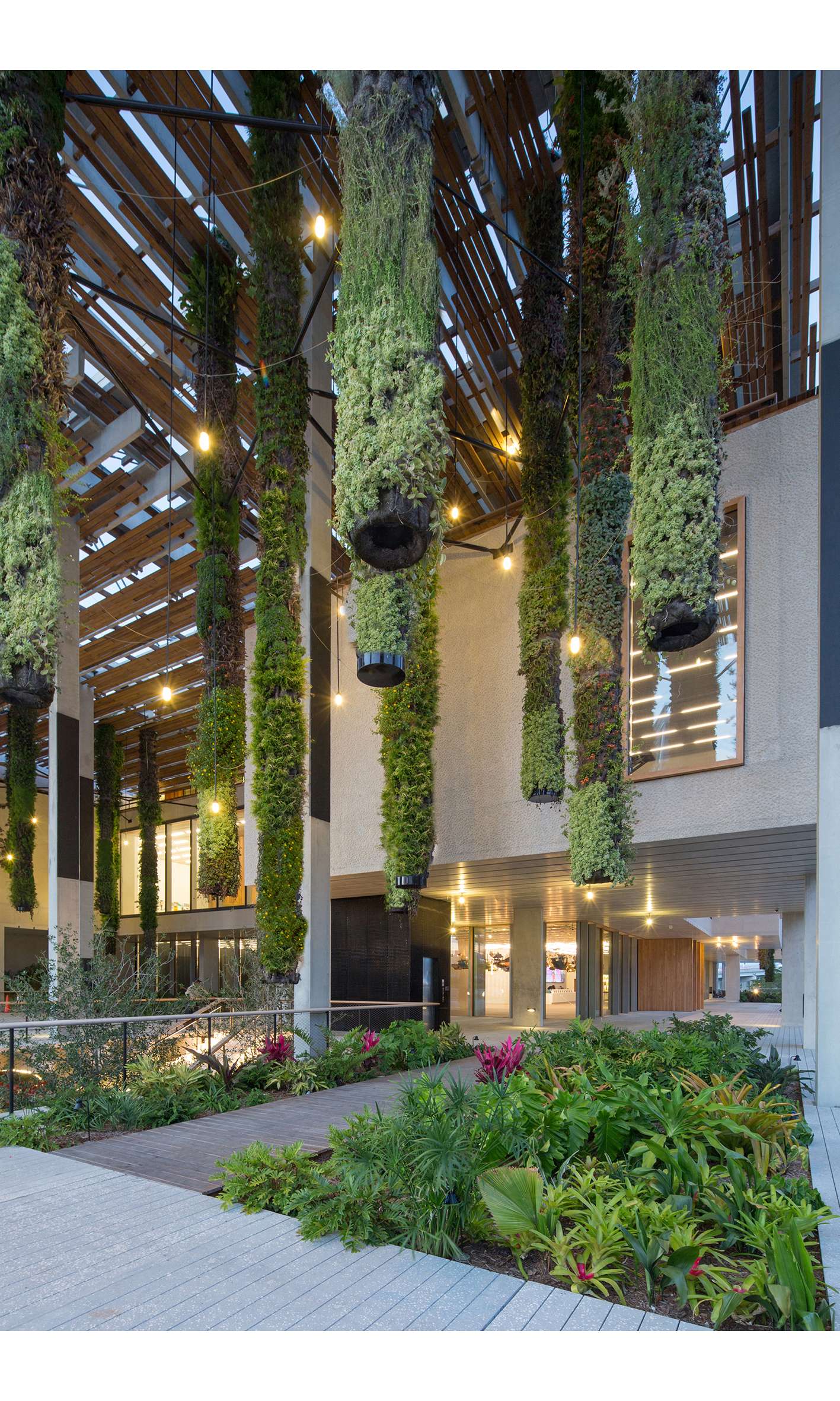
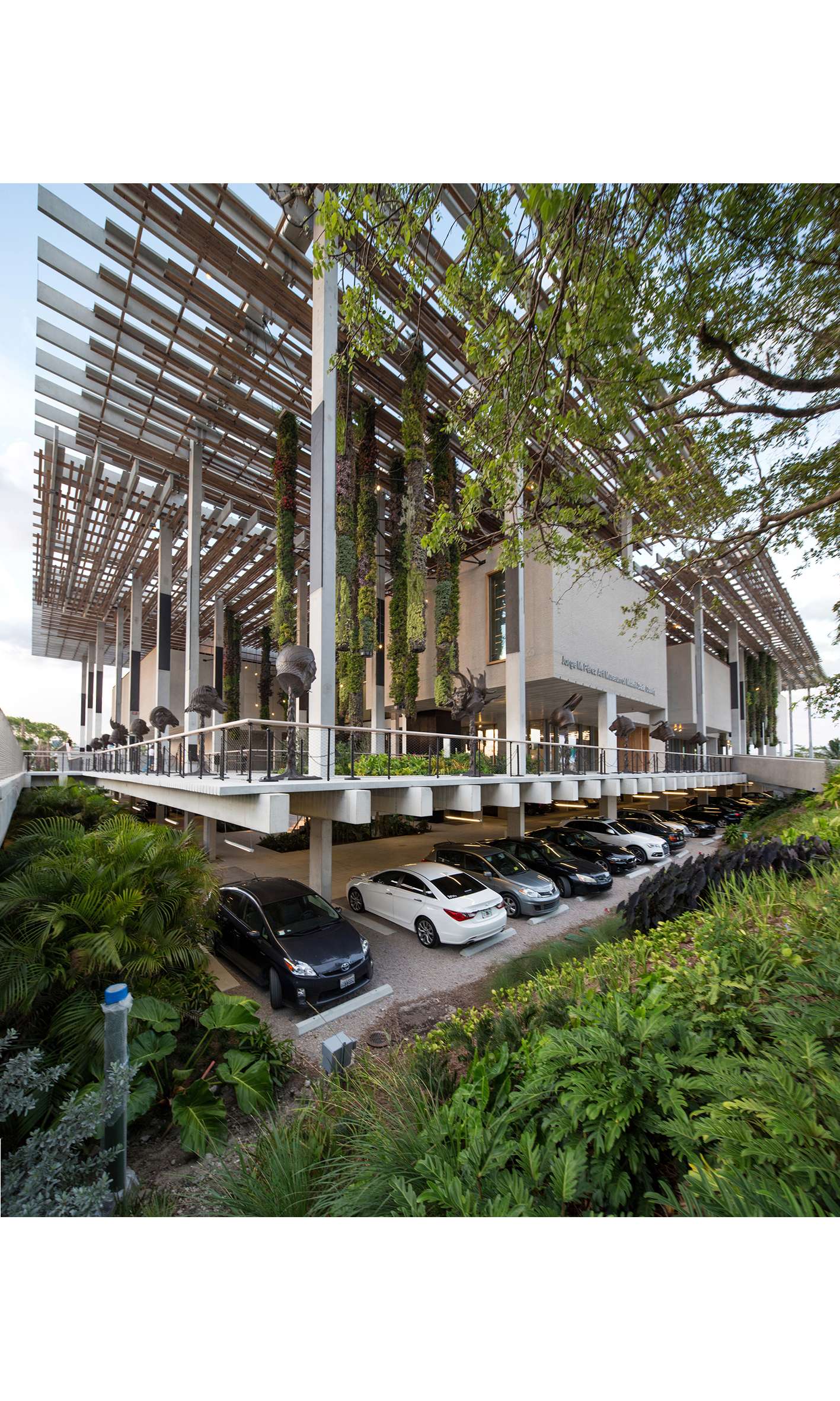

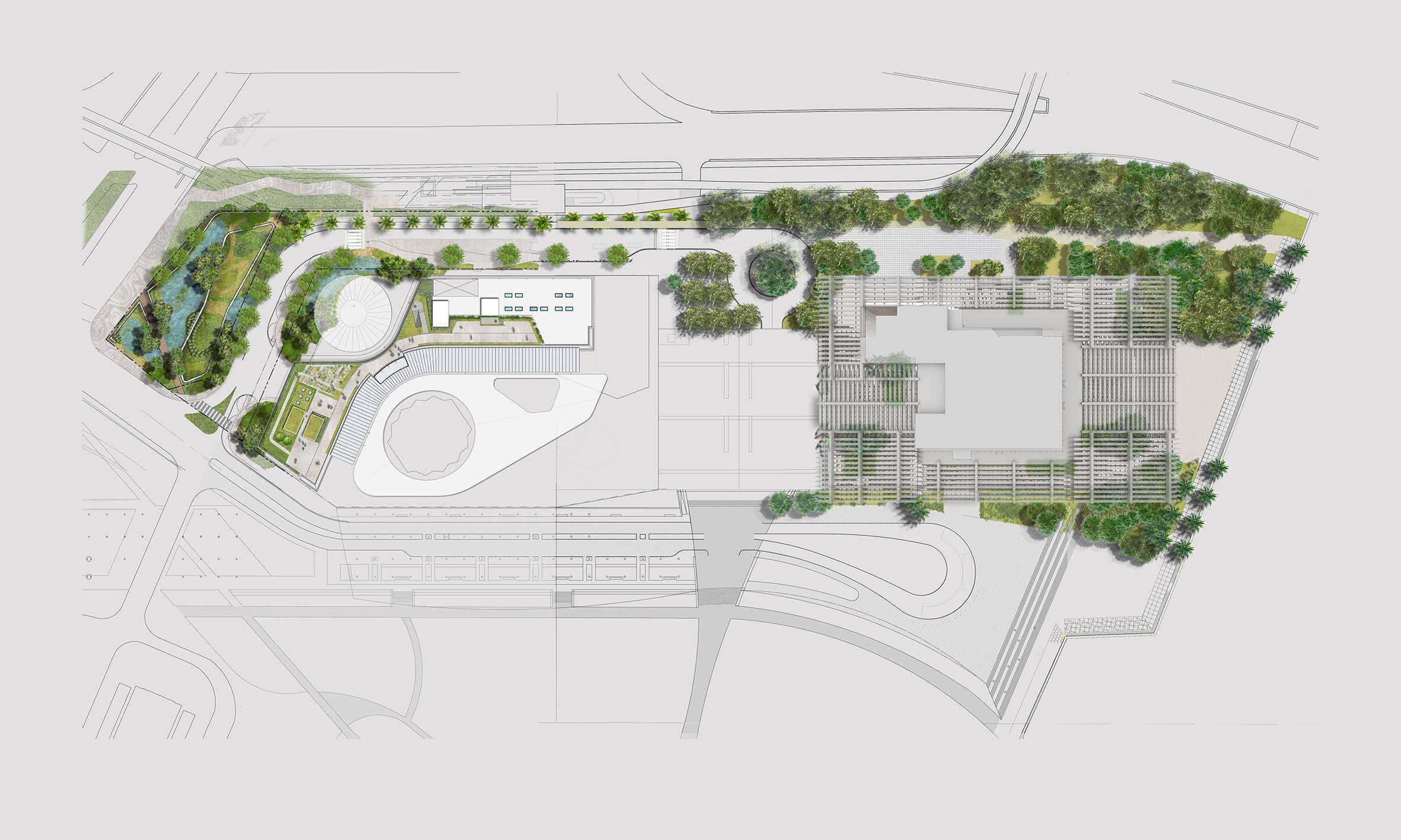
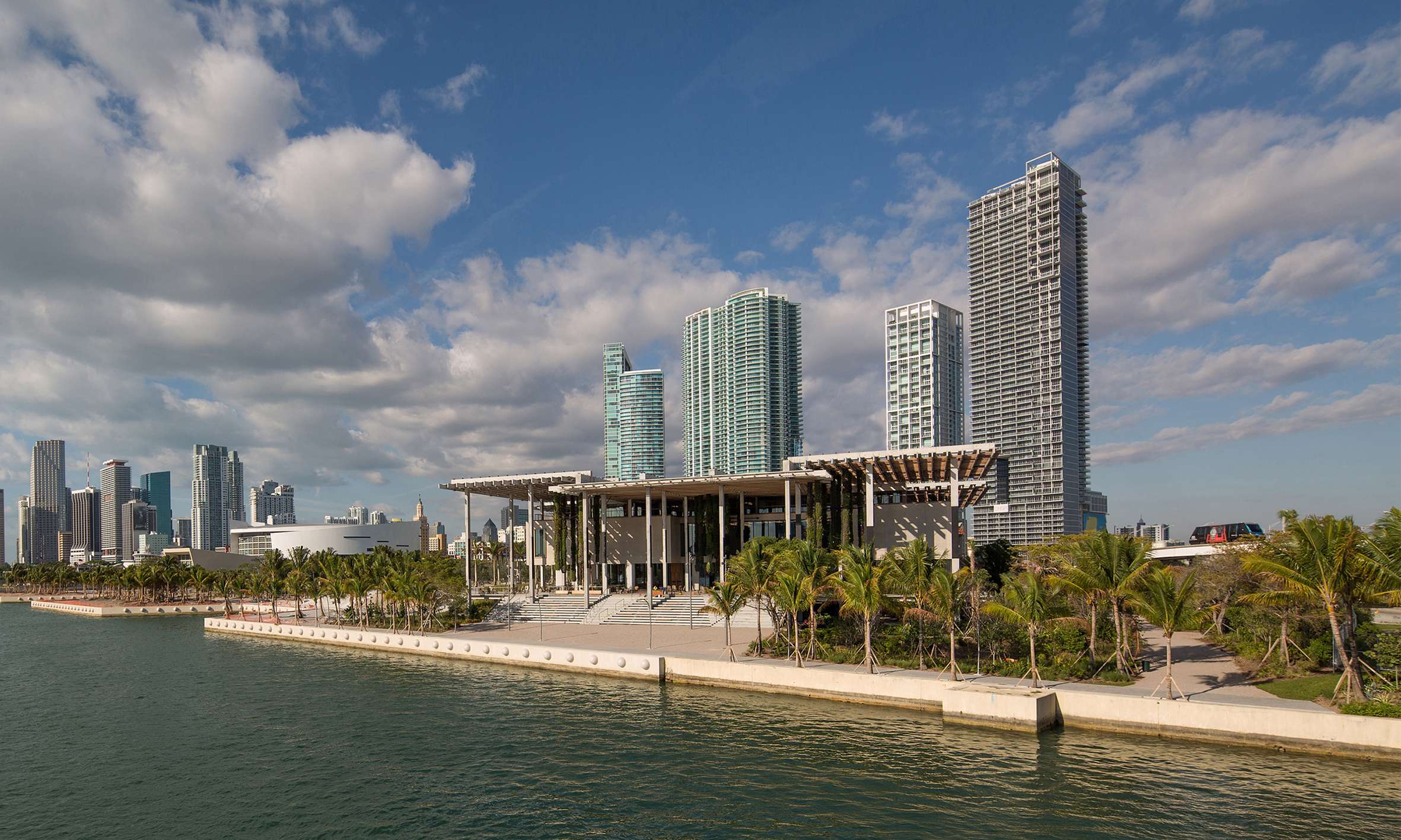
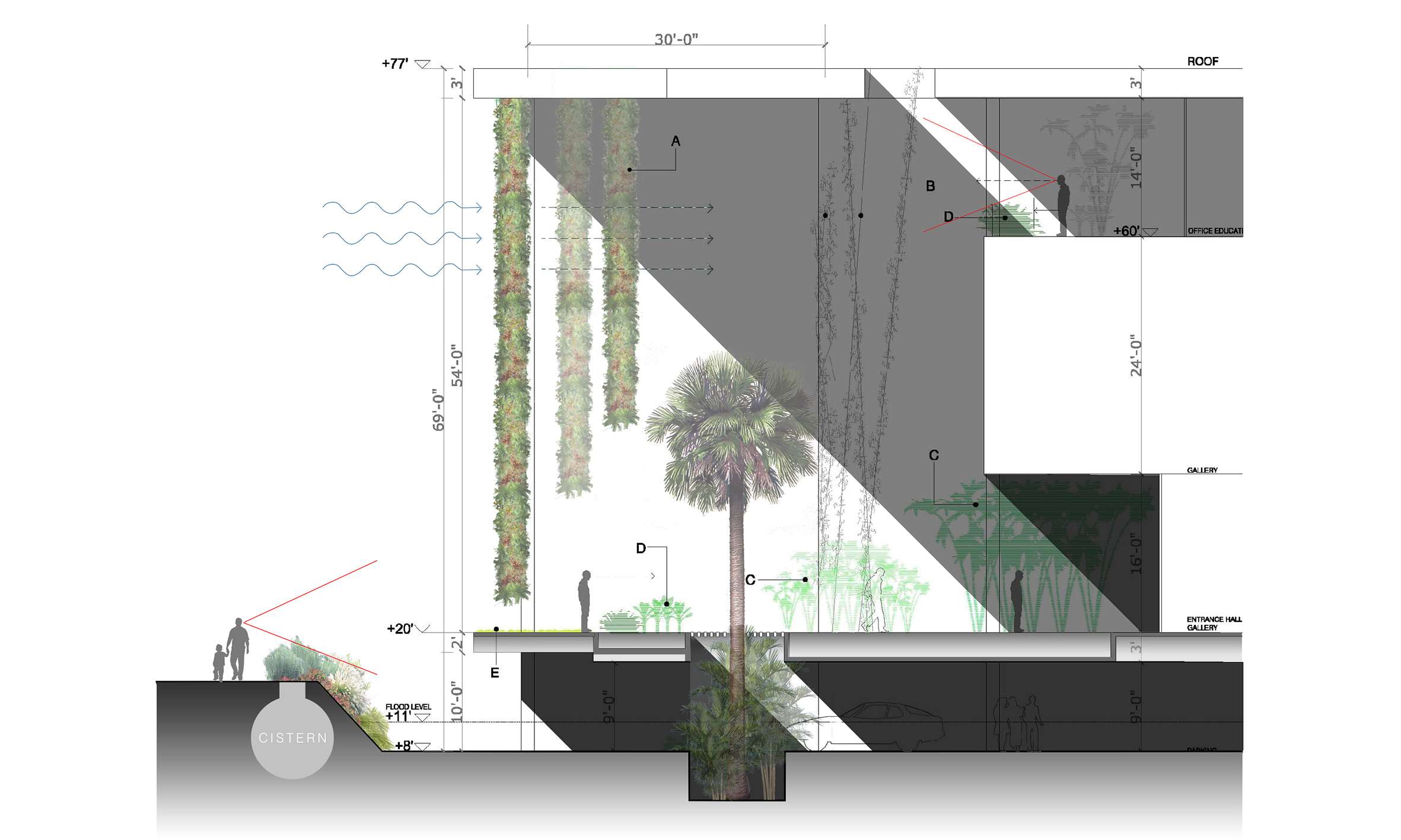
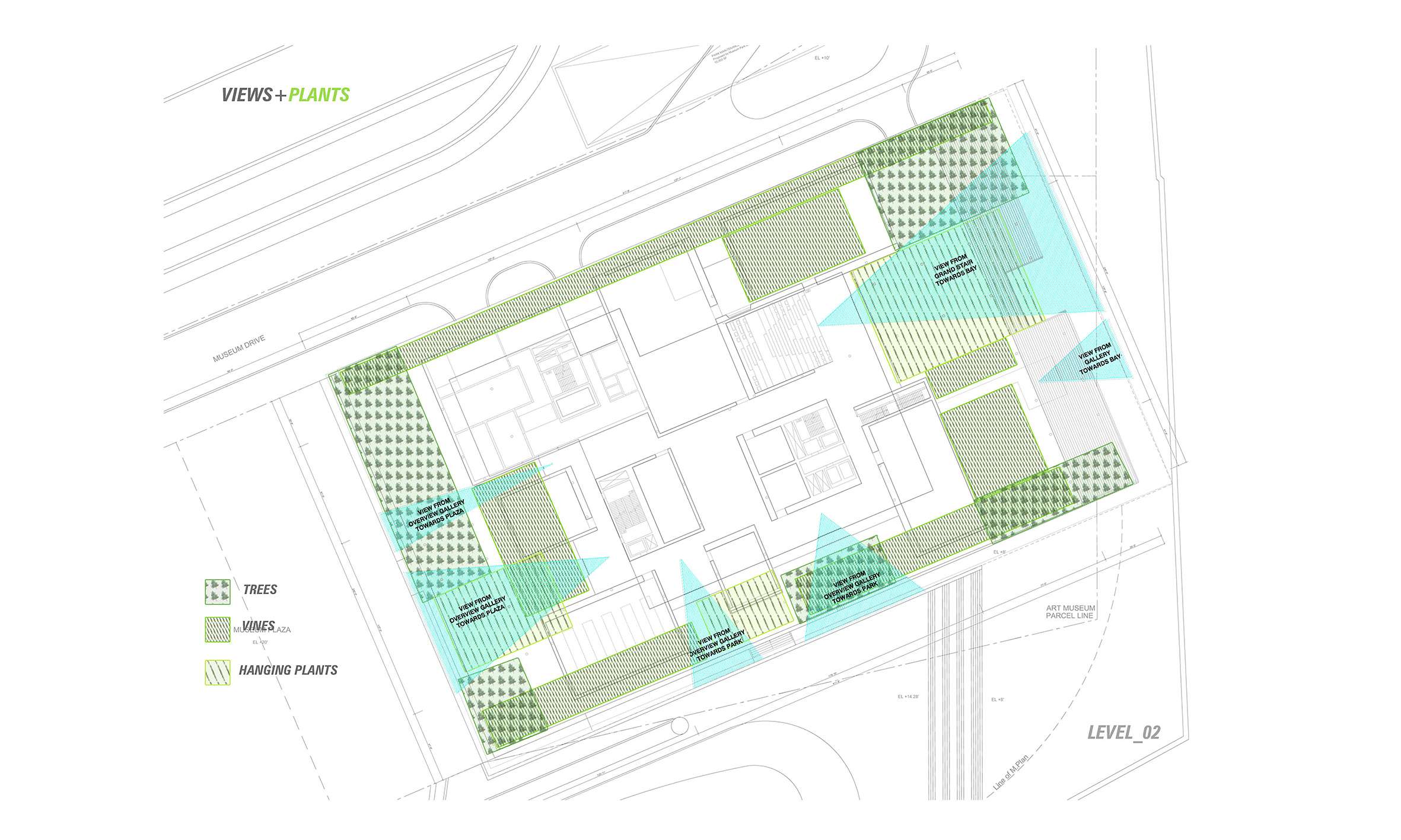
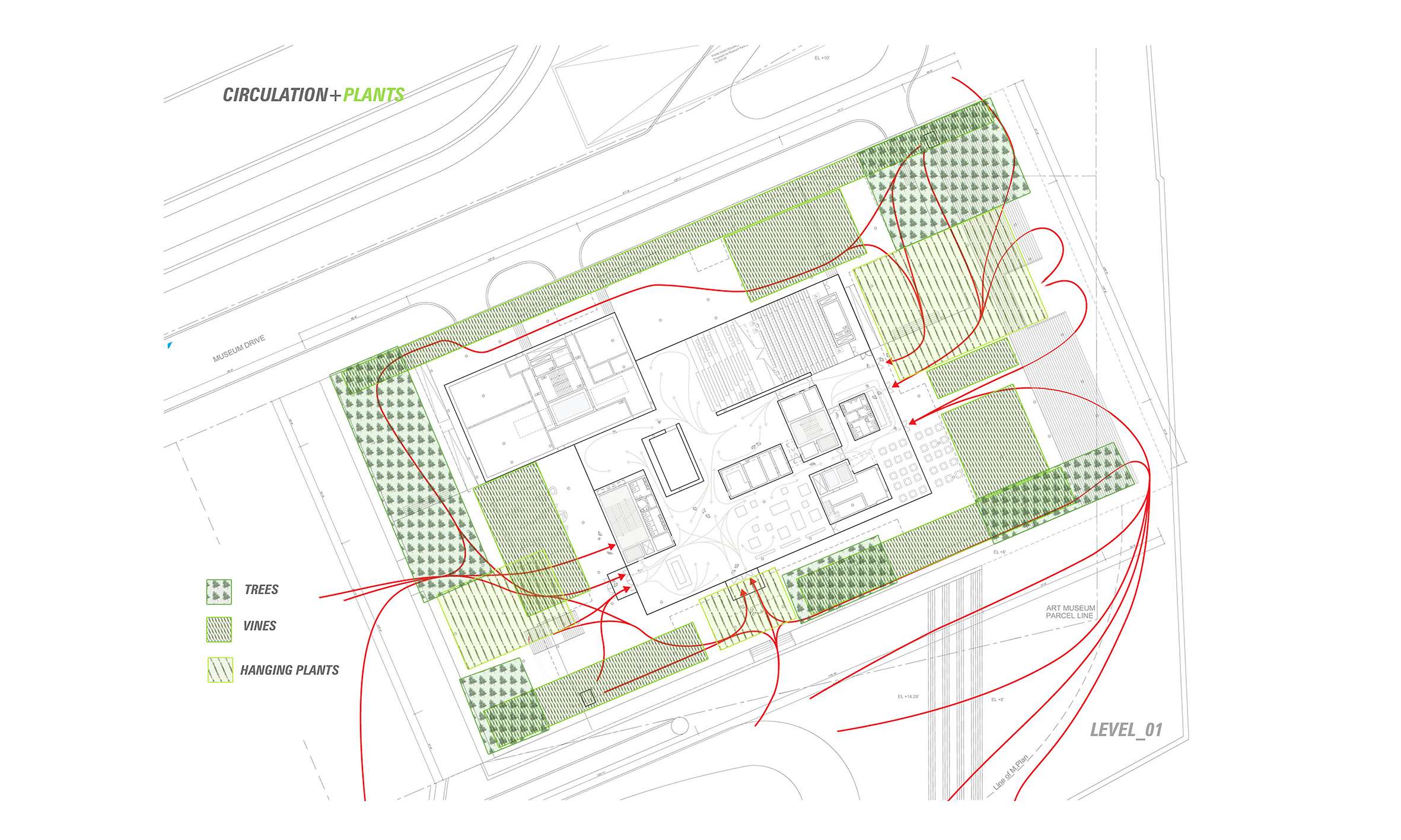
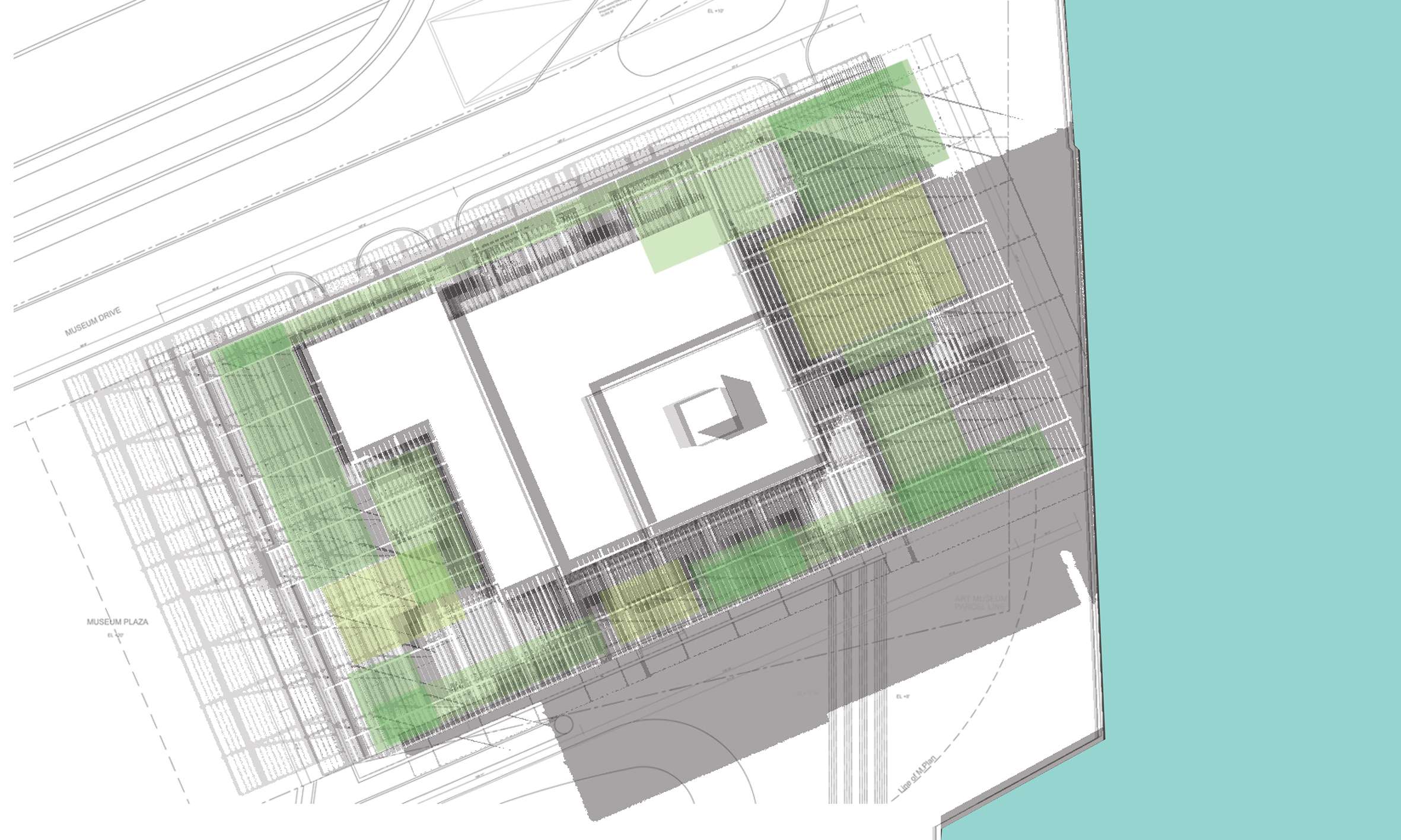
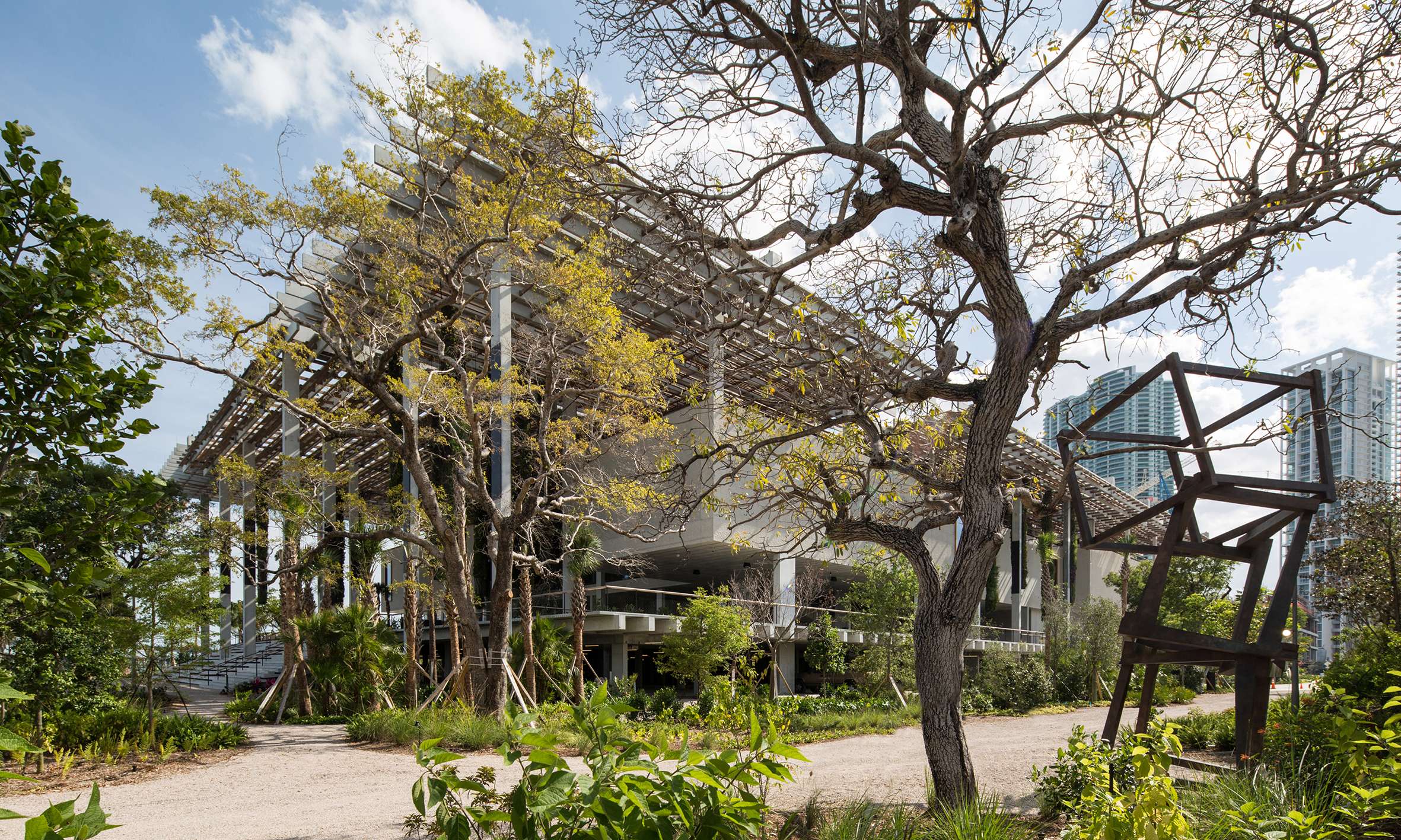

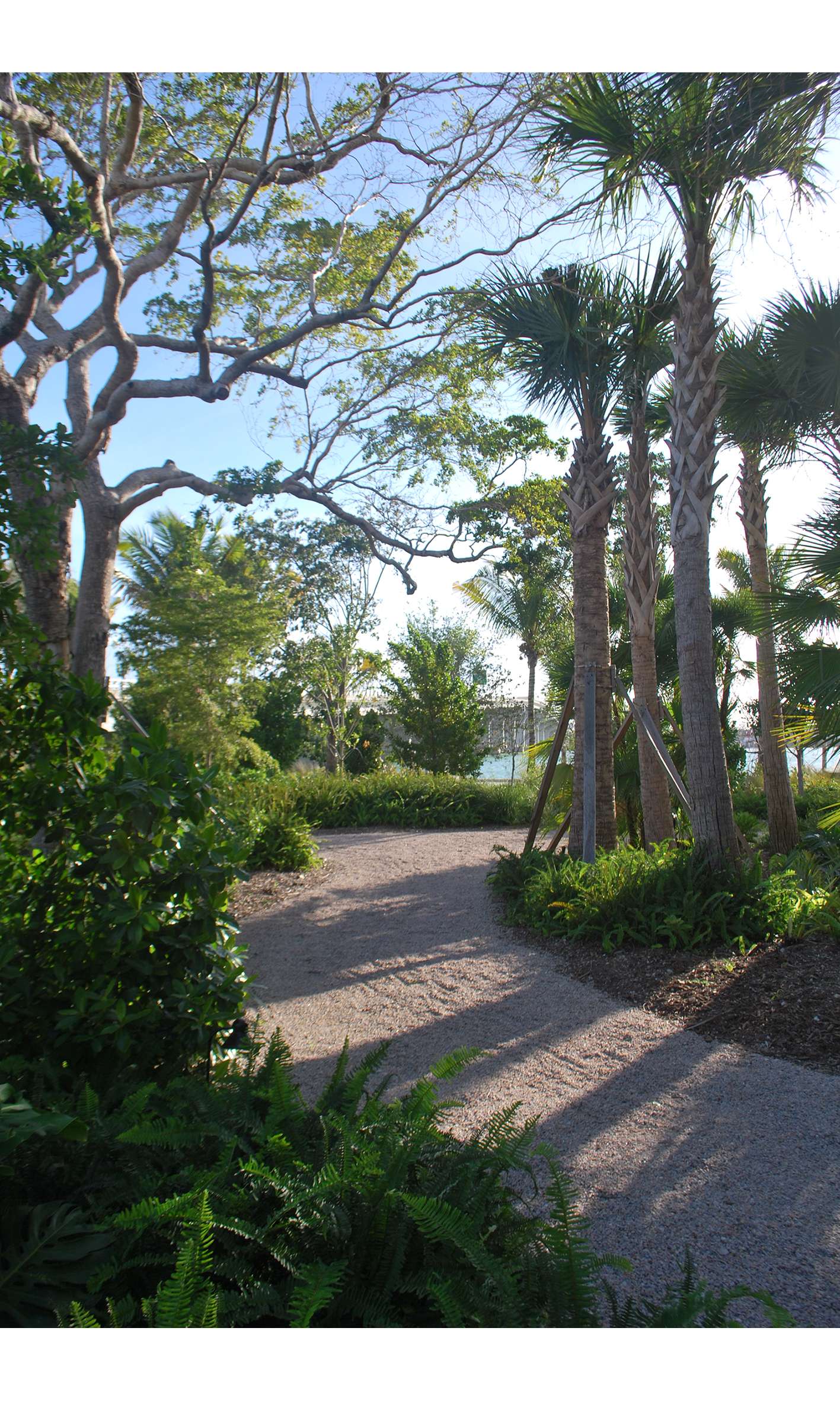

Perez Art Museum
ArquitectonicaGEO of Miami provided the local intelligence and driving force behind the innovative and sustainable landscape setting for the new PAMM.
1) Architect’s Statement:
Where the Perez Art Museum Miami (PAMM) building itself was designed by Herzog & DeMeuron to express the raw material of concrete in its many forms, native plants have been chosen to display the raw materials of our landscape as complement and contrast to the geometric architecture of the building. Native trees, shrubs, groundcovers and vines spring from the ground plane in vibrant counterpoint to more formal, hanging, vertical gardens. In addition to the lush pan-tropical vegetation of South Florida, landscape materiality is deconstructed to exhibit the Earth’s most basic forms, including gravel in paths, the parking garage, and in the urban concrete environment.
2) Special Considerations:
Because of direct proximity to Biscayne Bay, the Art Museum was elevated 10 feet above the 100-year flood level to minimize storm surge concerns, allowing the parking garage to be located below the museum. This facilitated an unprecedented design that integrates parking and planting beds with rain cisterns concealed in berms for irrigation use, stormwater infiltration, temporary storm surge storage and aquifer recharge. The innovative porous-floored parking garage, along with rain gardens, has been designed to capture rain water and funnel it into the ground water system, reducing local flooding and storm water runoff into Biscayne Bay. This last innovation saved significant project funds from being spent on injection wells. A Metrorail station was integrated into the design of the museum complex, allowing a small parking lot footprint, and providing spectacular views of the museum, landscape and Bay from the public transit system.
3) Design Solution:
The richly detailed sculpture garden provides opportunities to discover permanent and rotating art exhibits within the landscape. A naturalistic style dominates the ground level plantings, progressing from South Florida natives mimicking endemic habitats outside the building, to a mix of plant types adjacent to the building, and finally a more constructed pan-tropical and exotic palette within the garage and museum level planters. The landscape sequence begins on Museum Drive, continues in the underground parking garage with a surprising display of plant material in unexpected locations, continuing above ground with the spectacle of hanging vegetation.
The concept of formal hanging gardens was expanded to include the use of water wise, animal-friendly native plant material, in conjunction with systems to capture rain water and A/C condensation for irrigation use. Ten large, original trees were transplanted and cared for on-site during construction, and have been placed in their new locations, serving as focal points and anchors for all other plant material. New plant material was chosen to be able to survive the harsh climate of South Florida, which can alternately provide saltwater, heavy wind, drought and excessive rain.
4) Materials, Systems, Innovations:
The horizontal landscape has been designed to tread lightly on the environment by providing a multitude of environmental services, at the same time it limits overuse of precious resources. While many of the technical and sustainable innovations are invisible to the public, it is also designed to provide a beautiful and serene location along the waterfront to explore art, both natural and manmade.
Perez Art Museum Miami (PAMM) is part of a world-class museum and sculpture park complex located on the edge of Biscayne Bay. Building and site design integrate the highest possible level of innovative green infrastructure and educational outreach opportunities. The landscape includes 100 suspended, planted columns, irrigated by stored rainwater and AC condensate. Porous paving and rain gardens encourage rainwater infiltration into ground level planting, and the native plant palette requires minimal water, and provides habitat.
1. Landscape compliments the architecture by way of contrast. A naturalistic landscape sets off the artifice of the geometric building and constructed landscape of the hanging green.
2. Landscape materiality is an extension of building materiality. Concrete is a native SoFl material as is our planted landscape. Also reduce materials to most simple forms such as gravel on paths and in the garage.
3. A landscape that serves as a sculpture garden. Jed Novatt sculpture is already on-site and the landscape will be installed around it. There are some opportunities for traditional open space installations, but the garden will primarily be about discovering works within the landscape, as is the case with Chaos Bizkaia. Gravel paths and smaller planting will be moved to accommodate some art while some works will be site specific. A notion of discovering works within the landscape will dominate the sculpture garden.
4. Plant material: 10 mature trees returned to the original building site after being relocated for 5 years will serve as focal points and anchor all other planting. A naturalistic style dominates throughout the ground level and level 1 planters. However, plant types move from south florida natives mimicking endemic habitats outside the building, to a mix of plant types adjacent to the building, and finally a more constructed pan-tropical and exotic palette within the garage and level 1 planters which will compliment Mr. Blanc's selections for the hanging vegetation.
